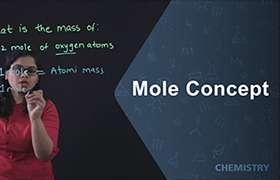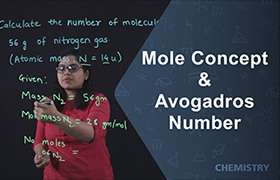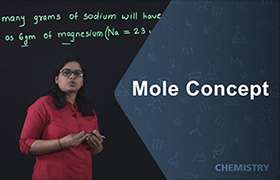CBSE Class 9 Answered
Can you please explain in detail and from scratch, what Millikan's Oil Drop experiment was and what its aim was?
Asked by srikar1009 | 14 Oct, 2010, 12:00: AM
The Oil-Drop Experiment

The scheme of the experiment is as follows: An atomizer sprayed a fine mist of oil droplets into the upper chamber. Some of these tiny droplets fell through a hole in the upper floor into the lower chamber of the apparatus. Millikan first let them fall until they reached terminal velocity due to air resistance. Using the microscope, he measured their terminal velocity, and by use of a formula, calculated the mass of each oil drop.
Next, Millikan applied a charge to the falling drops by irradiating the bottom chamber with x-rays. This caused the air to become ionized, which basically means that the air particles lost electrons. A part of the oil droplets captured one or more of those extra electrons and became negatively charged.
By attaching a battery to the plates of the lower chamber he created an electric field between the plates that would act on the charged oil drops; he adjusted the voltage till the electric field force would just balance the force of gravity on a drop, and the drop would hang suspended in mid-air. Some drops have captured more electrons than others, so they will require a higher electrical field to stop.
Particles that did not capture any of that extra electrons were not affected by the electrical field and fell to the bottom plate due to gravity.
When a drop is suspended, its weight m · g is exactly equal to the electric force applied, the product of the electric field and the charge q · E.
The values of E (the applied electric field), m (the mass of a drop which was already calculated by Millikan), and g (the acceleration due to gravity), are all known values. So it is very easy to obtain the value of q, the charge on the drop, by using the simple formula:
m · g = q · E
Millikan repeated the experiment numerous times, each time varying the strength of the x-rays ionizing the air, so that differing numbers of electrons would jump onto the oil molecules each time. He obtained various values for q.
The charge q on a drop was always a multiple of 1.59 x 10-19 Coulombs. This is less than 1% lower than the value accepted today: 1.602 x 10-19 C.

The scheme of the experiment is as follows: An atomizer sprayed a fine mist of oil droplets into the upper chamber. Some of these tiny droplets fell through a hole in the upper floor into the lower chamber of the apparatus. Millikan first let them fall until they reached terminal velocity due to air resistance. Using the microscope, he measured their terminal velocity, and by use of a formula, calculated the mass of each oil drop.
Next, Millikan applied a charge to the falling drops by irradiating the bottom chamber with x-rays. This caused the air to become ionized, which basically means that the air particles lost electrons. A part of the oil droplets captured one or more of those extra electrons and became negatively charged.
By attaching a battery to the plates of the lower chamber he created an electric field between the plates that would act on the charged oil drops; he adjusted the voltage till the electric field force would just balance the force of gravity on a drop, and the drop would hang suspended in mid-air. Some drops have captured more electrons than others, so they will require a higher electrical field to stop.
Particles that did not capture any of that extra electrons were not affected by the electrical field and fell to the bottom plate due to gravity.
When a drop is suspended, its weight m · g is exactly equal to the electric force applied, the product of the electric field and the charge q · E.
The values of E (the applied electric field), m (the mass of a drop which was already calculated by Millikan), and g (the acceleration due to gravity), are all known values. So it is very easy to obtain the value of q, the charge on the drop, by using the simple formula:
m · g = q · E
Millikan repeated the experiment numerous times, each time varying the strength of the x-rays ionizing the air, so that differing numbers of electrons would jump onto the oil molecules each time. He obtained various values for q.
The charge q on a drop was always a multiple of 1.59 x 10-19 Coulombs. This is less than 1% lower than the value accepted today: 1.602 x 10-19 C.
Hence, the aim was to find out the charge on the electron i.e. -1.6*10-19 C.
Answered by | 14 Oct, 2010, 11:40: AM
Application Videos
Concept Videos
CBSE 9 - Chemistry
Asked by rajputanaji290 | 03 Oct, 2023, 09:30: PM
CBSE 9 - Chemistry
Asked by muditsharma287 | 09 Mar, 2023, 10:10: PM
CBSE 9 - Chemistry
Asked by shivalaxmi0205 | 08 Mar, 2023, 07:46: PM
CBSE 9 - Chemistry
Asked by shivalaxmi0205 | 08 Mar, 2023, 07:43: PM
CBSE 9 - Chemistry
Asked by jssjj | 19 Jan, 2023, 07:25: PM
CBSE 9 - Chemistry
Asked by mohammedhaqqani.6b | 14 Jun, 2022, 02:51: PM
CBSE 9 - Chemistry
Asked by gauravsingh36428 | 14 Mar, 2022, 07:44: PM
CBSE 9 - Chemistry
Asked by jiyajthakor | 28 Feb, 2022, 07:03: PM
CBSE 9 - Chemistry
Asked by gillsaabjashanpreetsingh3 | 16 Jan, 2022, 01:23: PM
CBSE 9 - Chemistry
Asked by prachisharma772007 | 16 Jan, 2022, 11:12: AM











